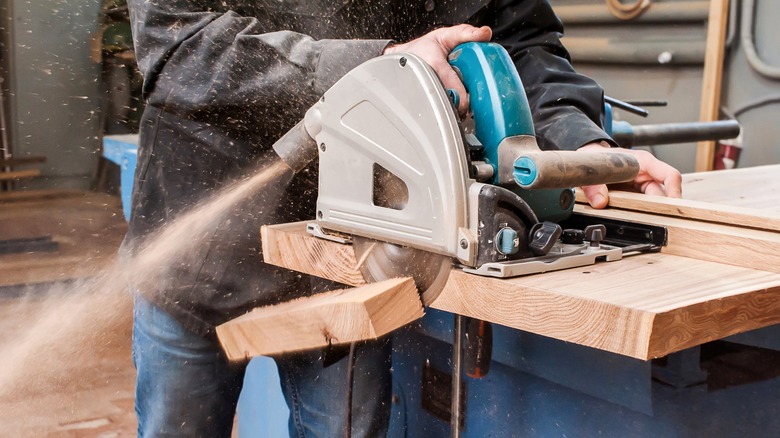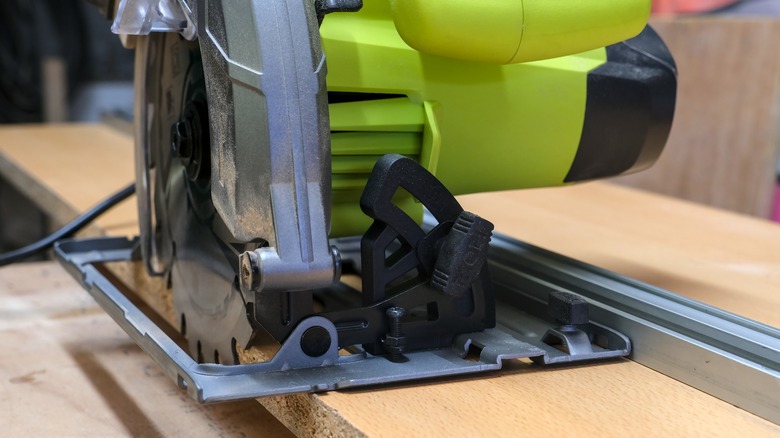How To Safely Use A Circular Saw For Projects Around The House (& Mistakes To Avoid)
When cutting wood for a project while outside your workshop, a handy powered circular saw can go through many kinds of wood. It makes the job far easier than a hand saw. A circular saw is one of the best ways to cut large pieces of wood when you can't use a table saw. However, whether you're running this power tool from a power cord or a battery, its spinning blade could be dangerous. Even though the blade usually has a protective blade guard on it, enough of the spinning blade is exposed that it represents a laceration and amputation hazard.
To control this power tool safely, follow any guidelines included with your circular saw. The handle and power button are near the top of the tool –- and away from the blade –- for a reason. Keep your hands secured on the upper part of the tool to control it. Spread your feet apart and evenly distribute your weight so you don't lose your balance as you move the circular saw across the cutting surface. If you feel like you're having to reach too far to finish a particular cut, stop and readjust the wood's position.
Wear safety goggles, as the circular saw will kick up debris while cutting. Avoid wearing loose clothing or jewelry that could tangle in the spinning blade. Use a sturdy workbench with clamps to keep the wood from spinning or sliding while you cut. Finally, let the blade stop spinning completely before you lift the saw away from the wood.
Mistakes to avoid when cutting with a circular saw
A common mistake when cutting with a circular saw is maintaining a straight line when going across a large piece of wood. Consider adding a fence guide rail and clamps as a circular saw accessory to make your DIY projects easier. These accessories keep the saw straight on the cut line, something that is difficult when you are eyeballing the line.
Errors in the setup of the circular saw are common, too. You can adjust the depth of the blade to match the thickness of the wood. Only the tips of the teeth on the circular saw blade should go through each piece of wood. If you set the blade too deep, you could make significant contact with a sawhorse or workbench, dangerously throwing the saw backward. If you don't have a good grip on the saw during an unexpected kickback mishap, you could suffer cuts and lacerations.
Finally, make sure that your circular saw is in the best possible condition before cutting with it. Common mistakes are using a dull blade or a battery that's low on power. A dull blade doesn't go through the material smoothly, increasing the chances of losing control or suffering from kickback. If the blade is leaving scorch marks on the wood or seems to have trouble moving through the wood, it may need replacing. The motor may run intermittently and the blade may not spin as fast and become stuck when you have a low battery.

